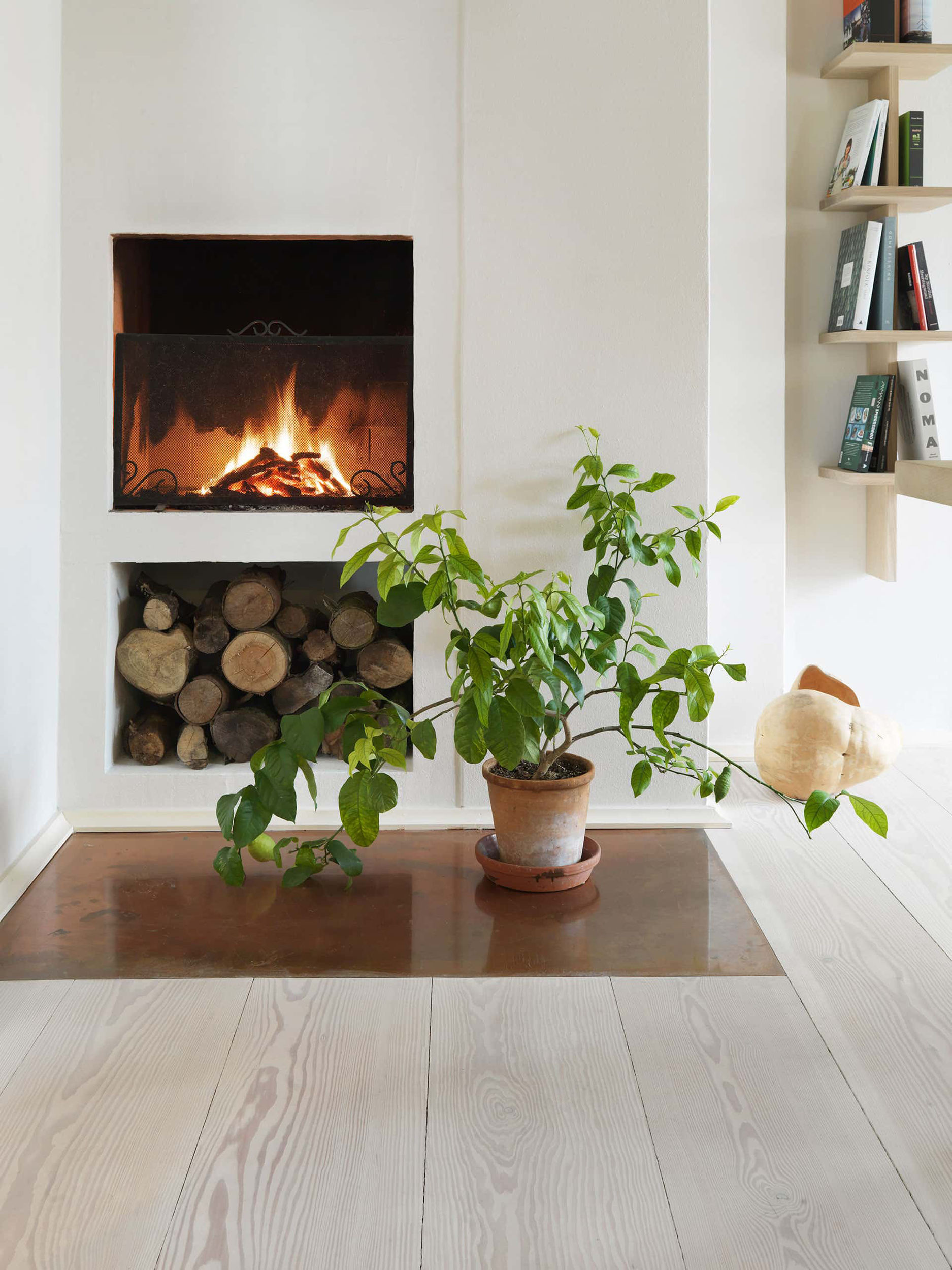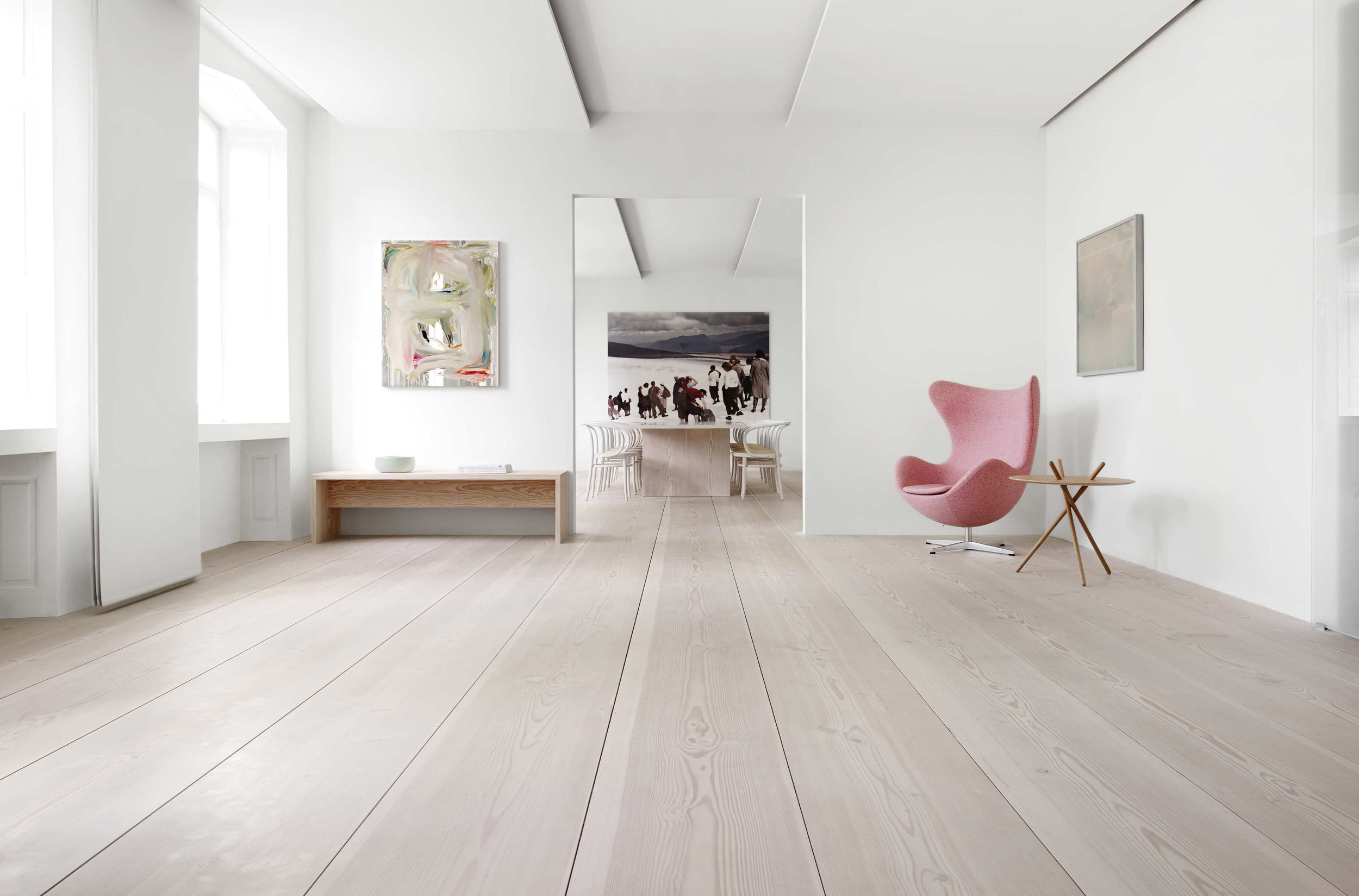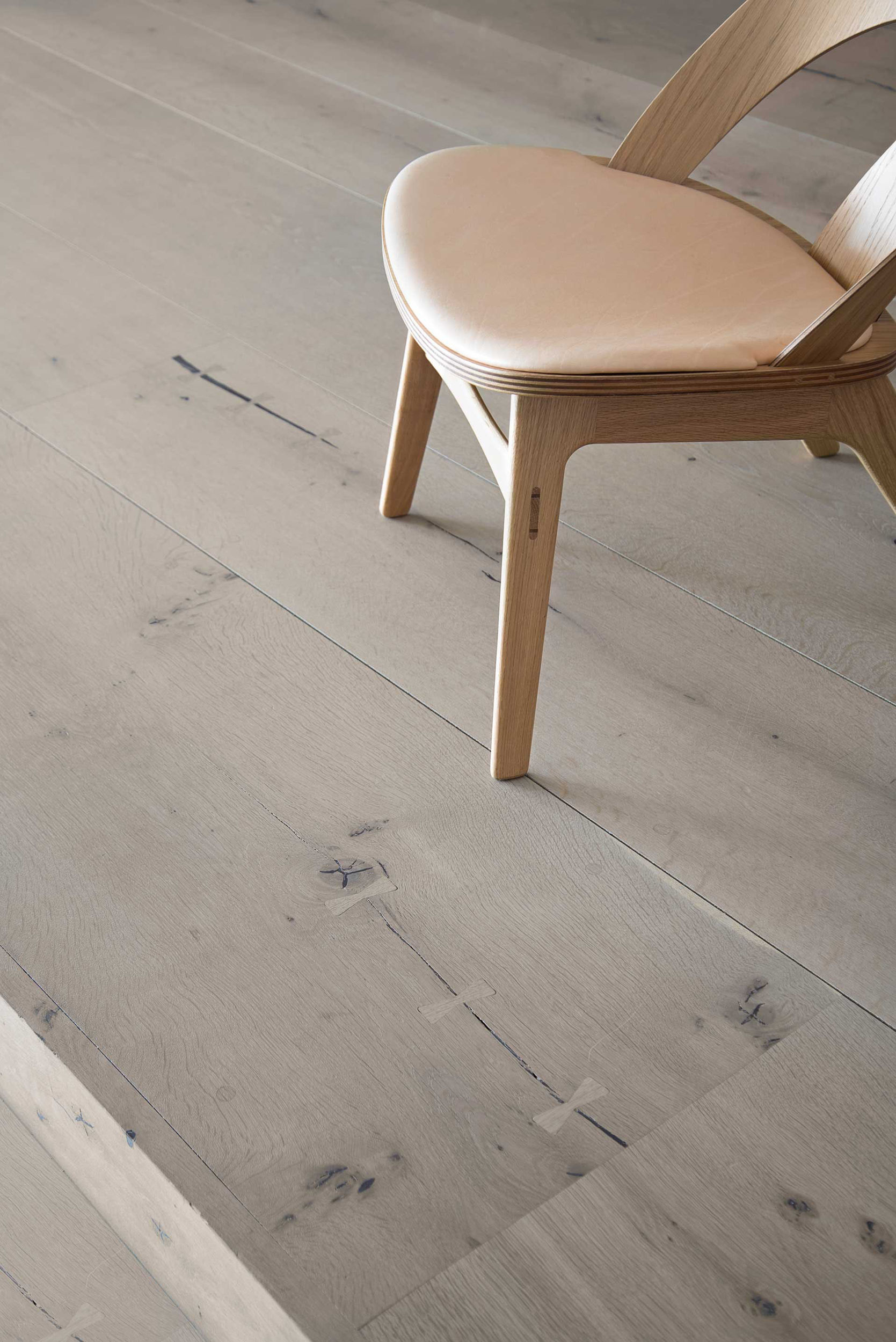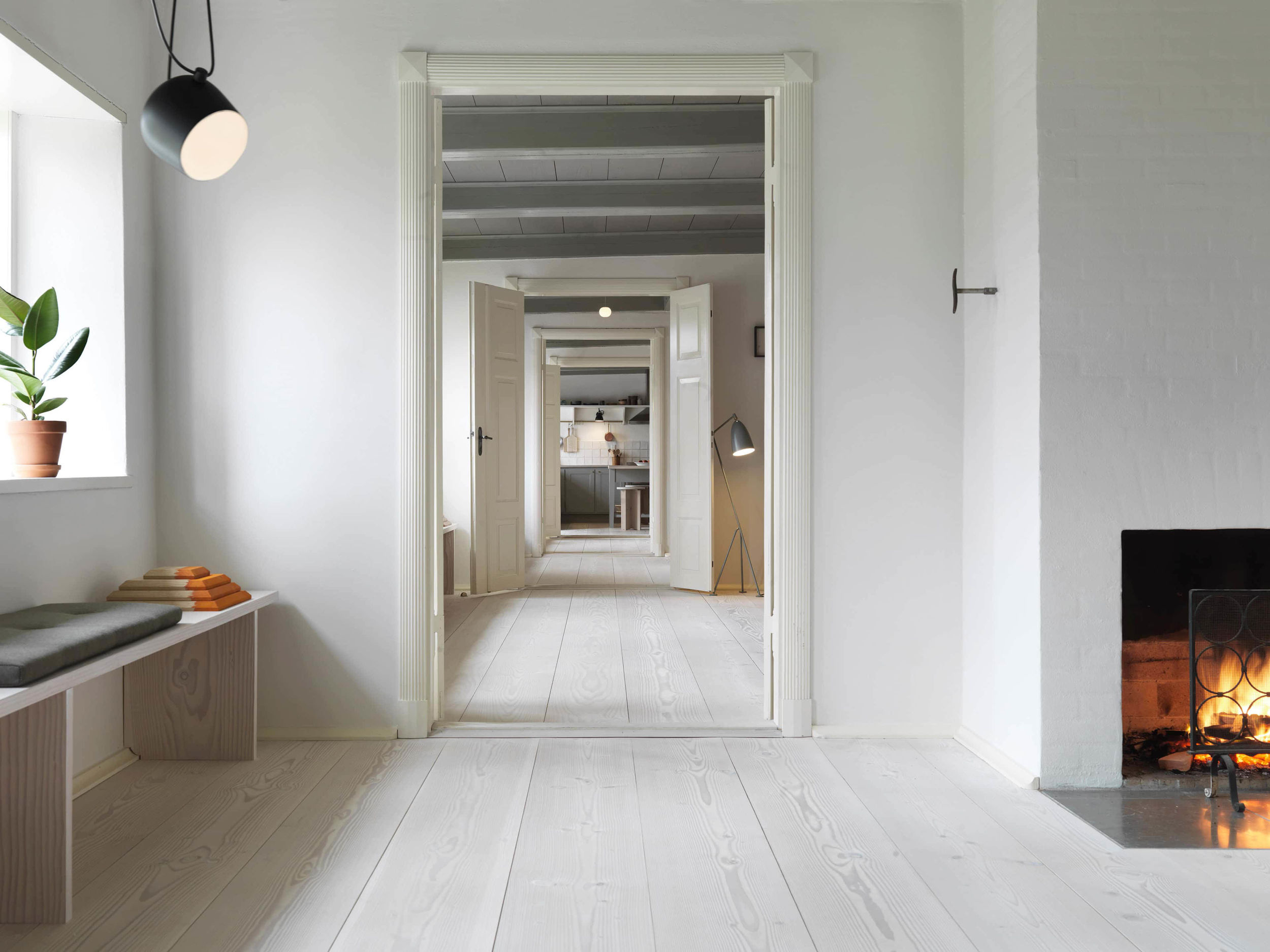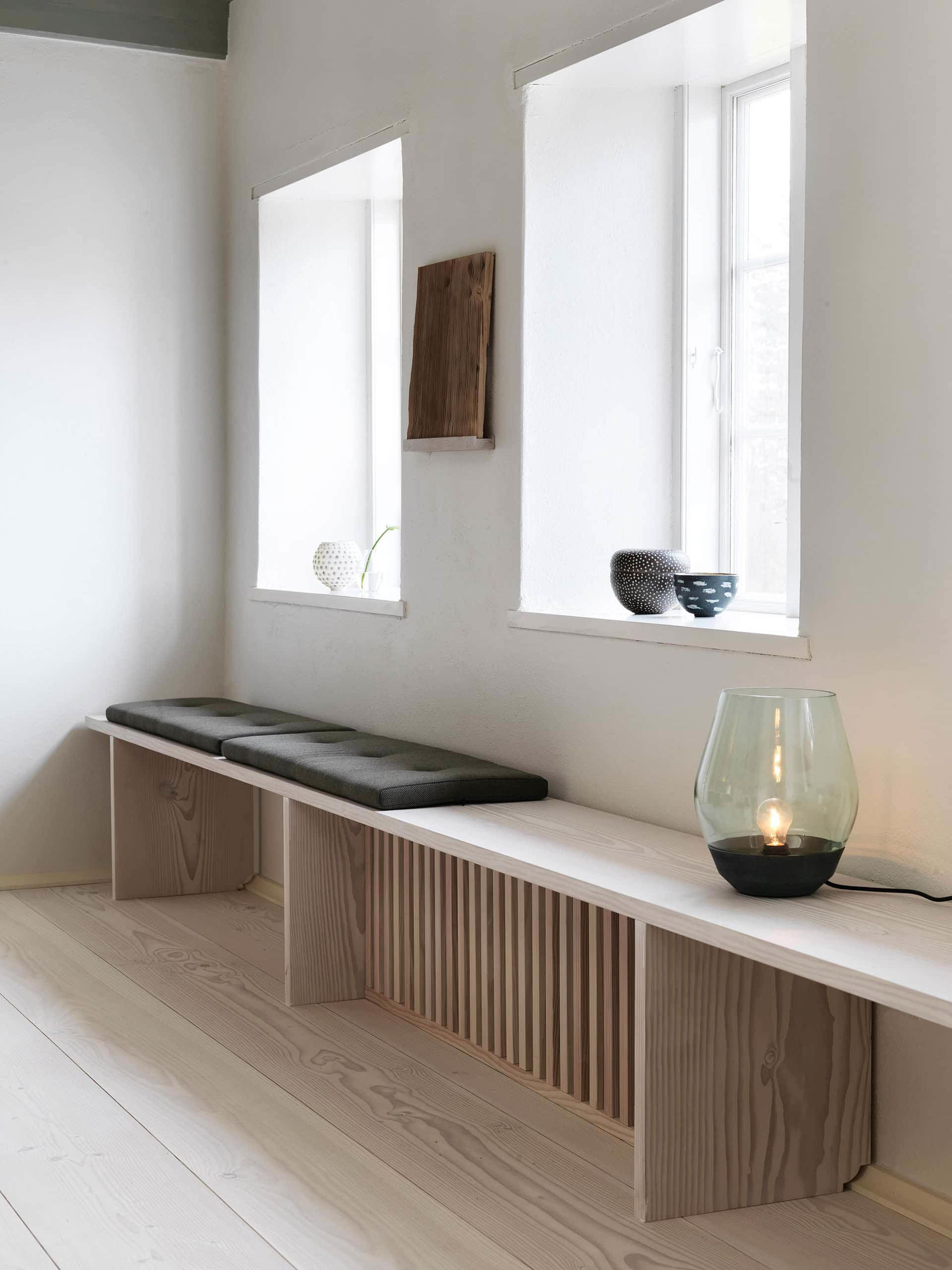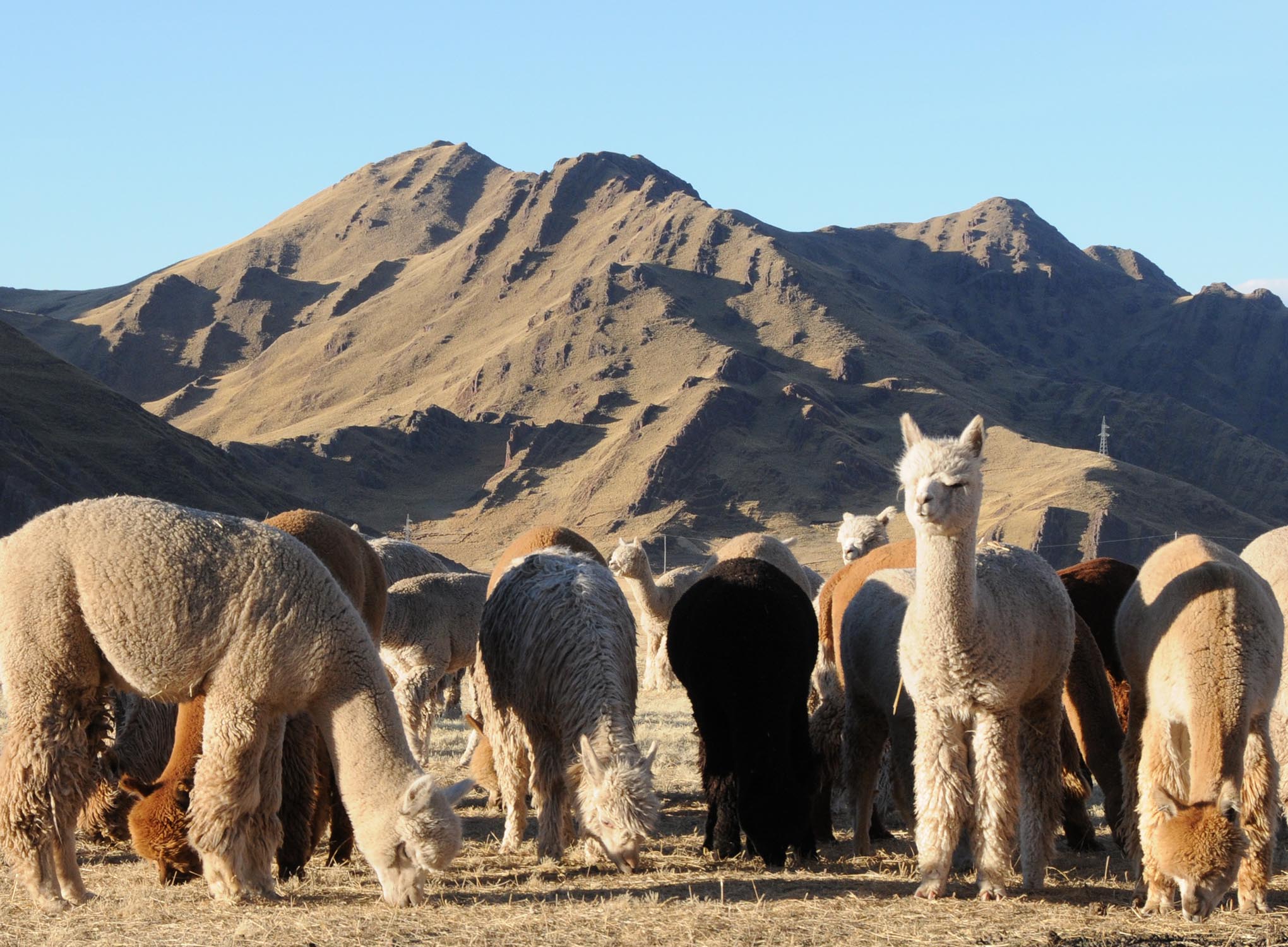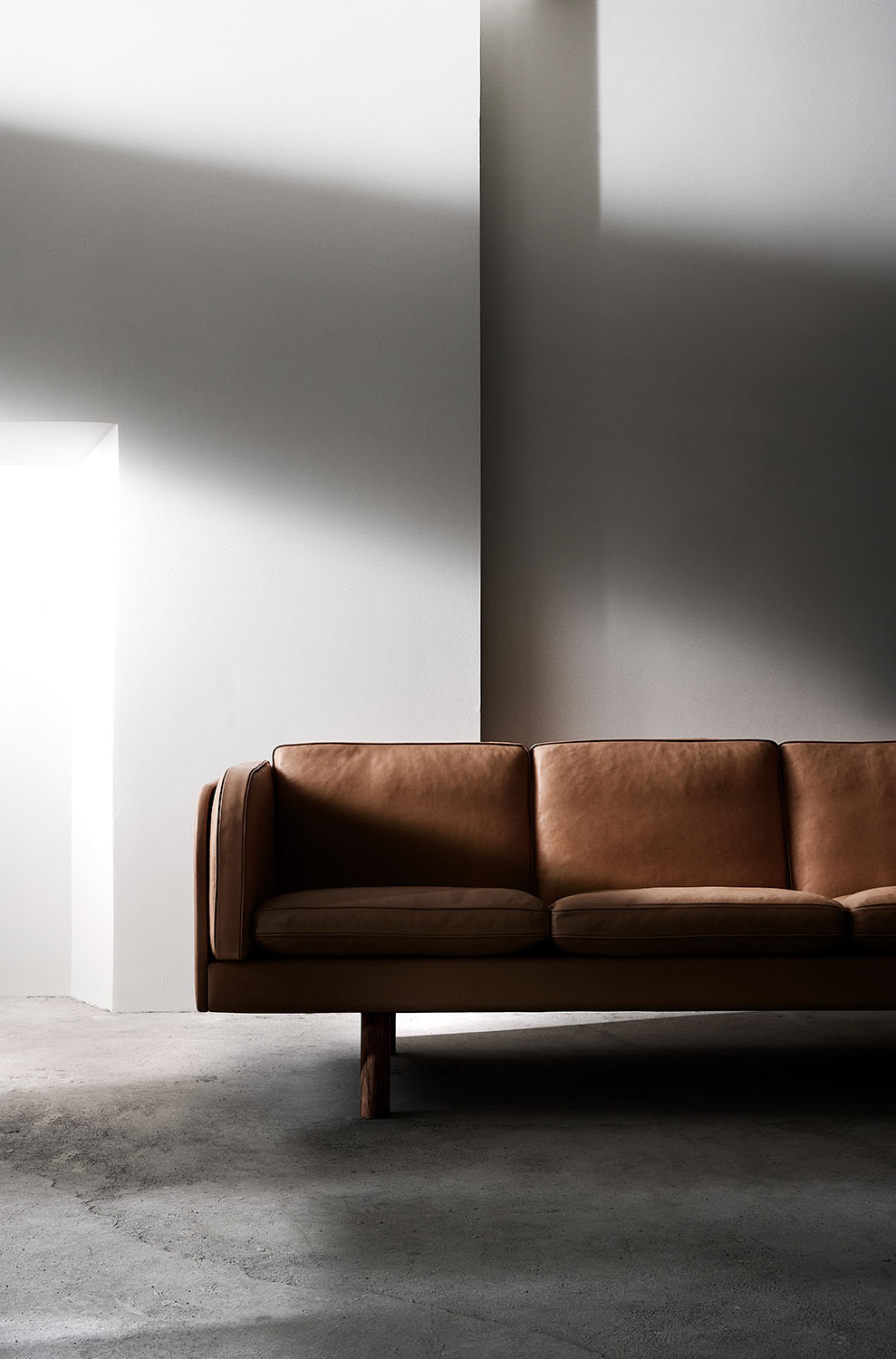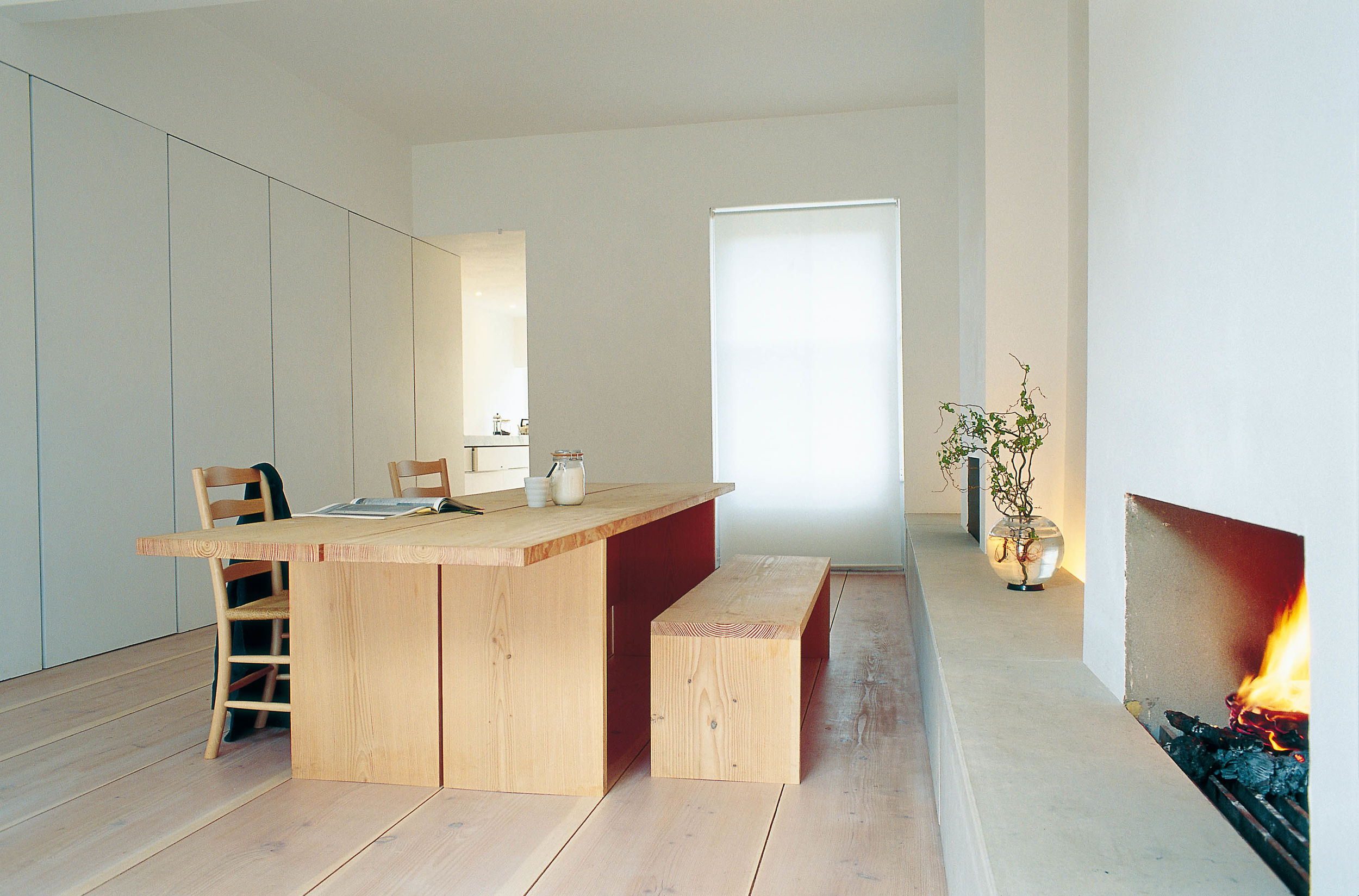
Craftsmanship
Interview with Hans Peter Dinesen
The Danish flooring company Dinesen has a storied history. Established in 1898 as a local sawmill, its operations have revolved around a curiosity in the various uses of wood, and a provable commitment to and respect for the ecosystems in which the material grows. Dinesen trees are handpicked from family-owned forests in France and Germany, and are all between 80 and 200 years old. A family-run company, Dinesen has been passed down across five generations. We talked to Hans Peter Dinesen one weekday afternoon, while he worked from the company’s satellite office at the former School of Architecture in Aarhus, Denmark.
Where are you based?
I’m based in Aarhus. We have an office here, at the former School of Architecture, close to our showroom in Mejiborg, which was designed by the architect David Thulstrup. This office is a small wood workshop, and we’re building a laboratory for creatives who we invite to experiment with the future of wood.
Can we begin with an overview of Dinesen?
Ok. The company is 124 years old. It was founded by my great great grandfather, who’s name was also Hans Peter. His son Thomas took over, and then his son Hans Peter, and so on. (My son is called Isaak – I’m the first to break the chain.) We have a long legacy of working with wood, of exploring what wood can be. In the old days Dinesen was a sawmill. When the company was founded, it was German – at that point, the south of Denmark was occupied by Germany – and so it was named in German, as a sägewerk. Somehow, my family has always retained this curiosity in wood – the might of it – and the curiosity has been handed down from one generation to the next. We like to ask the questions: What needs do people have right now? And how can wood help?
What generation are you?
The fifth.
Your job title is Head of Exploration and Brand Development…
My brother and I are working on the company’s legacy, which is the part of the organisation that concentrates on the future of Dinesen, and which looks back through our history to find new inspiration.
Was not going into the family business an option for you?
I was never told, ‘Now it’s your turn.’ My parents didn’t force me. There was obligation for former generations, though. They had to run the company. They couldn’t do anything else.
What’s the current mission?
We see our assignment as giving the whole tree as long a life as possible. We fell trees in the south of Germany, but only really old trees. We take huge responsibility in taking care of every part of the tree, and of making a continues effort to give the wood a meaningful new life, through collaborations with designers and architects. Flooring is a fundamental part of our business. But also furniture, other interior design elements. In order to take care of the whole tree, we need to be creative in the ways we use it. That’s our mission. And that our products should promote wellbeing.
The trees you fell are hand-selected…
Yeah. It’s the sustainable way. Sustainable logging. You know, there are areas of the world in which big parts of forests are removed – clear cut – and every seven years they are replanted. In the areas we work in, they don’t replant. We pick the trees we need, and the forest regenerations itself. The forest does that itself – it’s been doing that for ages. We make space for young trees to grow, to become big trees.
Is that the most sustainable way?
It has been for 300 years.
It’s what you’ve always done?
It’s been normal to do it that way. In the parts of the world where it’s not done anymore, they need to relearn. Industrialisation created new machines, and bigger sections of forest are cut to make more money. Hopefully they’ll return to using old methods. We’ve always worked with forests that use selective models, and that have multiple species within the forest system, because that, too, is important for a resilient forest.
You mentioned wellbeing. Can you talk to us about that? How does wood affect our health?
We’re learning about this also. It’s something we know intuitively, that wood has a positive impact on us. We often sense when people enter one of our homes, or one of our show rooms, that they instantly, just… [exhales]. The sense and smell the tree, the wood. I think it’s something that calms us. Something about the smell.
It’s a sensory experience.
Yes. All senses. Touch. Vision. Smell. Sound. I don’t know about taste… Maybe?
Can you give us a sense of one of your most important projects?
The most important project happened in 1992, a collaboration with [the architect] John Pawson. At the time we were a small company working mainly with castles. Old heritage projects. That was our starting point. We didn’t really do projects in the private arena; my grandfather never liked to, he wanted to work with castles. Then John Pawson came along and asked for some Douglas fir planks for his own house in London, and that completely transformed our view of the significance of wood within space. We went from being a company that worked within the heritage world – making floorboards for castles – to a company that worked in a more minimalist frame. The Pawson project created a kind of renaissance for the Douglas fir plank we were using. The identity of the wood was so much more visible in a more clean and serene space.
Was Pawson aware of the wellbeing aspects of the wood? Or was it just a cosmetic decision to use Douglas fir?
That’s a good question; I was three years old when he first came by. But John has described to me that a friend came into his office one day with a sample of Douglas fir, and when John looked at it, the friend said, ‘This wood is too busy.’ He mean that there was too much power in it, too much going on. But John fell in love with it, and I think he was impressed at its scale, that it was this one massive piece of wood all the way through, no air in the middle.
What can you tell us about the future of Dinesen? In which direction are you headed?
We’re very much directed towards this responsibility of making use of as much of the wood as possible. So now we’re asking questions like, Can we even make use of sawdust? Sawdust makes up 50% of our waste material. We want to explore, together with designers and researchers, how to utilise this material, and make meaningful products. This mission is a continuation of being curious about wood can become, and whether waste material can become useful. We have to look long term; we have a deep connection with the forest. When I visit, we look into things like: What are the trees of the future? With climate change, with rising temperatures, it means that some wood species are dying out. Three years ago we introduced ash trees – the tree of life, as its known – but ash is dying out across Europe. For the next 100 years, ash won’t be available. So what kind of trees will endure? Some conifers are good. And cedar trees. In the forest in Germany, in Schwarzald, they’ve started planting cedar. We’re experimenting now with wood species we’ll likely to use in 100 years. We can do that because we’re a family business. The company needs to be a living organism.
The timescales are mind-boggling. 100 years, 200 years…
You have to be patient, that’s for sure.
You’re investing in the forest for the good of the company, but also for the good of the environment?
Basically, we have no business without a healthy forest, without a healthy ecosystem. So it’s important for us, and it’s part of our values: to look after the ecosystem’s wellbeing. We have a responsibility, when we fell trees, to take care of the forest.
Can you tell us more about asking students to experiment with wood?
Yes. We wan them to come up with new ideas, to answer the question: how do we better use waste materials? I think it’s important to work closely with students, with the next generations, and to let them help us form our company. We give them our knowledge, and they give us a new understanding, too. It’s a symbiotic relationship.
How old is your son?
Five.
Will he take over the family business?
That’s not my decision! I think my mission is to inspire him to find his own way, and to give him the support he needs to find a place where he can take responsibility. I’m still learning now what my responsibility is.
Words: Editorial Board
Photography: Courtesy of Dinesen et al.
